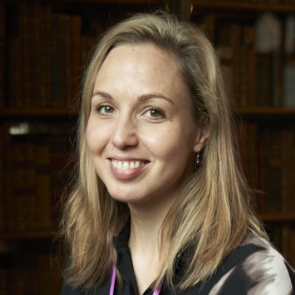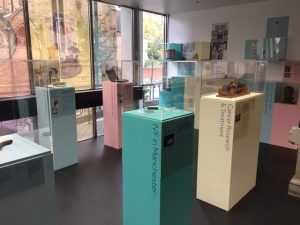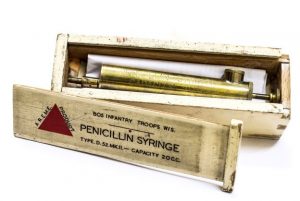Health Humanities and Object based learning in Teaching
 Stephanie Seville is the Heritage Officer for the Museum of Medicine and Health. She also works part time at the John Rylands Research Institute and Library as Exhibitions and Public Engagement with Research Coordinator and has worked at the University of Manchester since 2014. Find out more from Stephanie about the museum and her work there.
Stephanie Seville is the Heritage Officer for the Museum of Medicine and Health. She also works part time at the John Rylands Research Institute and Library as Exhibitions and Public Engagement with Research Coordinator and has worked at the University of Manchester since 2014. Find out more from Stephanie about the museum and her work there.
Manchester’s own Medical Museum
The Museum of Medicine and Health is part of the Social Responsibility team within the Faculty of Biology, Medicine and Health. The academic lead for the museum is Professor Carsten Timmermann – the Director for the Centre of Science, Technology and Medicine. The museum is not part of Manchester Museum or the other UoM Cultural Institutions including the Whitworth Art gallery. It is instead a collection is run by the faculty and is an asset and resource we want to promote in teaching and learning more broadly across the institution. There is so much potential in the objects and history here, which could be utilized in an interdisciplinary manner by a range of schools and subjects.

History of the Collection
The museum was officially created when the Stopford Building was completed in 1973 as the largest university building in the UK. Historic medical artefacts collected by interested professors were brought from the old medical school on Coupland Street, and the collections grew under the efforts and organisation of the wife of the Medical School’s Executive Dean, Dr F.B. Beswick (1925-2019), Charlotte Beswick (1926-2013). In its current form, the collection numbers around 10,000 items, from a range of eras and context within the history of medicine.
Ways the Collection can be Used
Most of the collection is stored within the Stopford Building, but there is a small exhibition in the foyer of that building, Instruments of Change. The idea behind the exhibition, opened in 2018, is that it showcases examples of stories and objects that relate to how the UoM and the city, teaching hospitals and individuals, pioneered development in medicine and impacts on patient care in Manchester and beyond. If people didn’t already know about us, it’s a great place to start, in having a look at the display.
In terms of what we can offer – the collections are vast and cover a range of topics in medicine and health, but also the history of teaching medicine at UoM. With being able to manage expectations, based on a part time role, I can consider requests for access to the collections, and welcome enquiries around what we hold and if they are relevant for your teaching. Objects can relate to wider themes covering ethics, gender, conflict and public health. Carsten wrote something on vaccine hesitancy, giving a historical angle to a current issue.
Manchester Digital Collections; in 2021 as part of an online digital resource managed and run by special collections at the John Rylands Research Institute and Library, the Museum of Medicine and Health was included in the History of Medicine collection within MDC. This selection of artefacts we care for, promotes the range of areas of the collection, from a penicillin syringe fashioned from a Bren gun oil can in 1944 and used on the battlefields of the Second World War, to a glass X-ray tube for mammography dates from the 1970s used at the Christie Cancer Hospital in Manchester. The Christie was the location of the first clinical trials of the drug Tamoxifen and led the field in radiotherapy research and training.

Community Outreach
The museum is one of the six areas of the activity of the Social Responsibility team in the faculty, with others such as Service Learning with Dentistry students. Who work out with communities in the city of Manchester that might otherwise struggle to access this form of healthcare.
I personally also take part in events like the UoM Community Festivals and specialist network meetings, summer 2022 I took Cardiology related collections as part of a centenary celebration at the British Cardiovascular Society conference in Manchester. We loan to large organisations like the Science Museum Group and the collections are viewed as significant.
Students of the Art Gallery and Museum Studies PG course, with the School of Arts, Languages and Cultures, have used the collections, on a loan basis for their Managing Collections and Exhibitions course over several years.
For teaching, I go out and take part in seminars and lectures and as well as this years’ Art Gallery and Museum Studies students I have recently spoken as part of a Heritage Studies module and Liberal Arts.







0 Comments